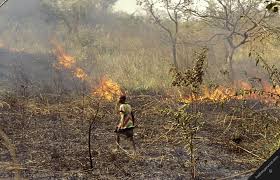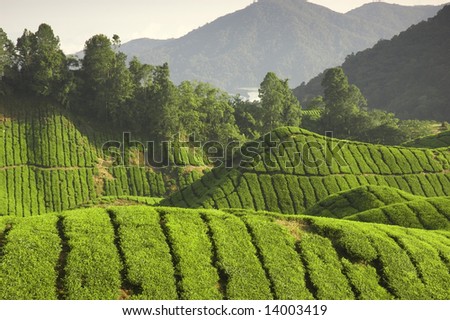It is also known as “slash and burning farming” where the forest is burned.
Firstly, a suitable site for cultivation is found. Then, wood and weeds are burned to make a clearing. The ash left on the land is used as fertiliser. Simple tools are used to prepare the land for cultivation and after 3-4 years when the soil diminishes in fertility, the farmer then moves to another plot of land
Shifting Cultivation is practiced by primitive tribes in the forested highlands of the Amazon Basin, Congo Basin, Papua New Guinea, etc. While cultivated using shifting cultivation, tropical rainforest nutrient is mainly locked up in the biomass with little nutrient in the soil. Also, the cycling of nutrients is rapid.
The tribe first selects a small patch of rainforest. To create a clearing on the forest, the tribe selectively slashes the natural vegetation by simple tools and burns the logs, so the nutrients are released as ash which dissolves and is washed by rain into the soil as natural fertilizers.
A variety of food crops are grown on the land such as rice, maize, cassava . The crops grow very quickly, some are ready to harvest after four to six months. After 2 or 3 years, due to decline in soil fertility, the yield of successive crops declines and weeds grows extensively.
Impacts
Shifting cultivation is an agricultural system used in tropical countries, in which a forest is cut, the debris is burned, and the land is then used to grow crops. Shifting cultivation conversions are relatively stable and long-term in nature, and they are the leading cause of tropical deforestation.
Usually, some type of shifting cultivation is used when extensive areas of tropical forest are converted into large scale, industrial agriculture, usually intended to supply commodities for an export market, rather than for local use. Shifting cultivation is also widely used by individual, poor farmers when they develop agricultural land for subsistence farming and to supply cash goods to a local market.
Factors determining success of shifting cultivation
There must be fertile soil that will be able to last for three to four years. As the same plot of land will be used for about four years, the soil fertility must be good. Farmers get their fertilisers from burning the biomass in the forest to get the nutrients. Thus, soil fertility is the key to growing good crops. There should also be enough workers working in the cultivation.

pictures of the burning process.




